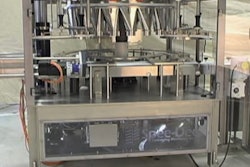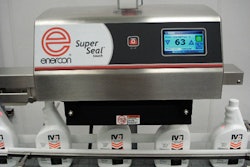Many observers in government and elsewhere quickly identified the food supply as a likely target. It’s large, multifaceted, crucial to all Americans, and vulnerable. Chief among the vulnerabilities, it was commonly concluded, are the vast amounts of imported foods. When foods come from other countries, there can be less knowledge of and less control over their safety.
Nine years and two administrations later, food import oversight is still a gap-strewn landscape. According to a May 2010 report from the Government Accountability Office:
• There are an estimated 180,000 foreign food facilities registered with the Food and Drug Administration as potential sources of imports into the U.S.;
• In 2008, FDA inspected 153 of them, and 95 in 2007; and
• The number of FDA inspections of food firms in other countries was 211 in 2001, then has been under 200 every year since.
Packagers who want to assure the safety of the foods or ingredients they import are well advised to rely on their own due diligence, contractual terms, and inspectional programs, rather than the oversight of governments.
The recent headlines about food safety have not been about terror, but about more old-fashioned microbial contaminations of foods like fresh produce, powdered milk, and meats, for example. But many believe enhanced oversight of imported food is one stone that would hit both these birds, as protections against contaminated food would presumably pick up the intentionally poisoned as well as the merely unwholesome.
Food makers in other countries who want to import into the U.S. are required by law to be registered with FDA, and importers have to give specific notice to FDA in advance of importation, thanks to changes in the law made after 2001’s attacks.
Food made overseas could get examined in the factory, or upon entry to the U.S. But FDA only literally examines about 1% of the food that is imported into the U.S., which is at about the level it was in 2001. You gotta figure it will always be impossible, just given the big numbers involved, for FDA to inspect all food coming into the U.S. So, addressing the problem from another angle, FDA thinks if it had better knowledge of the facilities the foods come from, better ability to halt imports of categories or of foods from specific sources, or better coordination with the customs folks, those efforts would help in lieu of the more labor intensive and expensive exercise of actual inspections of factories making imports.
Well, FDA has turned up the dials at both ends. It has opened some additional foreign offices to help increase the inspection rate, and it’s working up a computer program called PREDICT to help target its efforts at screening of incoming foods. PREDICT stands for Predictive Risk-Based Evaluation for Dynamic Import Compliance Targeting. The program generates a risk score for FDA-regulated products, and if the score exceeds a set threshold, FDA reviewers get notice of the shipment. Otherwise they get a “may proceed” message, unless there is some other reason to check it out. The system is intended as an improvement on the current system, OASIS, the Operational and Administrative System for Import Support. PREDICT is already being used in New York and Los Angeles. After technical problems are worked out, FDA expects to spread it nationwide.
GAO had said in September of last year that FDA’s and Customs and Border Patrol’s computer systems didn’t exchange information fully. They noted that CBP didn’t notify FDA about food shipments on their way in, to allow FDA to cross-check them against its list of imports about which FDA has been given advance notice. CBP says it has addressed that problem, though GAO says it hasn’t confirmed the effectiveness of the new processes.
GAO’s recommended fixes incorporate advice it has given Congress before: give FDA mandatory recall authority, gain more knowledge of GRAS substances in use in food, give FDA power to impose civil penalties on importers who violate the law. But recall authority might help clean violative foods off the market once discovered, but it won’t keep them from getting there in the first place. And the GRAS substances in foods are probably not a frequent source of safety problems, despite FDA’s and GAO’s discomfort with the lack of full knowledge about them.
The pending food safety legislation, which may become law within the next several months, would have some new requirements that directly affect imported foods. Notably, it provides for a corps of additional foreign inspectors. Also, it would set up a system for getting qualified bodies to certify that some imported food articles comply with specified requirements of U.S. law. Regulations would be promulgated to ensure that those certifying entities and their auditors are free from conflicts of interest. The law would also declare food misbranded if it is part of a shipment offered for import into the U.S. that lacks a certification of compliance.
Watch for FDA to step up its efforts in this area, partly in response to the GAO’s observations, using a variety of techniques.
Eric can be reached at [email protected], and visit his firm’s Web site at www.ericfgreenbergpc.com.

























